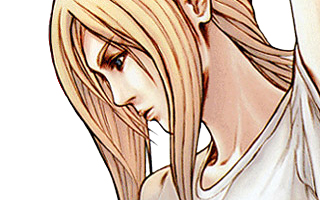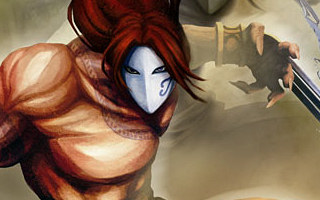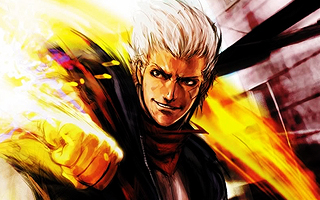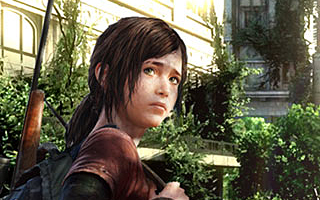Capcom Power System Changer
Top 10 Best CPS Changer Games of All Time!
In 1990, SNK brought a true arcade experience to home users with the release of the Neo Geo AES. Capcom’s Power Changer System had a similar premise and allowed users to play titles that were originally developed for Capcom’s CPS-1 arcade hardware. CPS Changer games were simply arcade PCBs encased in a special plastic shell, and the system itself was a glorified SuperGun adapter that allowed the games to be played without the need for a full arcade cabinet. (The system was designed with Capcom’s CPS Fighter joystick in mind, but standard SFC/SNES controllers could be used as well.) Few companies had a stronger presence in arcades than Capcom did in the early 1990s, so the concept of the CPS Changer might sound pretty appealing. Rest assured, there is a reason why so few people have ever heard of it. The system was released in limited quantities, sold at a premium price, and was only available via mail order. Capcom barely advertised the system and never seemed interested in supporting it in a meaningful way. Capcom had already moved onto the newer CPS-2 arcade boards by the time the CPS Changer hit the market, so there weren’t any new titles to look forward to. Only a handful of games were released for the console, and the selection was questionable at best. Looking at the CPS Changer library, one could surmise that the system was created as a means of offloading unsold arcade boards. Despite its failures, I thought it would be fun to look back at one of the most elusive consoles ever released.
Where’s Number 10!?
There were 13 games advertised for the CPS Changer, but The Punisher and Cadillacs and Dinosaurs were never published. This leaves 11 games that were “officially” released, but I decided against including Street Fighter II’ Champion Edition and Muscle Bomber since I have been unable to verify their existence and have never seen definitive proof that either game was actually released. (The CPS Changer saw updated versions of both of these games, so neither one of them would have been included on this list anyway.) Since there are only nine games for the CPS Changer that I’m comfortable mentioning, I was forced to break convention with the first ever Top Nine list in the history of this website!
9
Adventure Quiz: Capcom World 2
Arcade Release: 1992

Adventure Quiz: Capcom World 2 is a virtual board game that was released exclusively in Japan. After rolling a dice to advance on the board, players are tasked with answering a series of multiple choice questions. By answering correctly, players can earn extra points, regain health, or be given advantages to use in future questions. Points are awarded in accordance to how quickly the questions are answered, so there’s an incentive to think quickly. The game supports two players, but it’s a fast-paced experience since both players answer questions at the same time. Each of the game’s four selectable characters has their own unique traits. The warrior is sometimes awarded two points for a correct answer, the mage can select the genre of her question, the priest is more likely to recover energy upon answering correctly, and the cat gets to eliminate incorrect answers as though she were using a Who Wants to Be a Millionaire? lifeline. The quiz format is pretty dry when compared to something like Mario Party, but the Capcom Kingdom is a great backdrop for the game and I was happy to see so many cameos by Capcom characters. It’s a difficult game to rank or recommend since a strong command of the Japanese language is required to properly enjoy it, but I’m comfortable placing it on the bottom of this list in either regard.
8
Knights of the Round
Arcade Release: 1991

Knights of the Round was released shortly after The King of Dragons and shares its fantasy setting and RPG-inspired leveling system. The game focuses more on swordplay than sorcery, however, and more emphasis is placed on blocking attacks. The hack-and-slash genre is defined by mindless action, but the blocking system in Knights of the Round requires a lot of precision and adds an extra layer of strategy. The game features three playable characters from Arthurian legend who vary in terms of speed and power, and their appearances actually change as they level up. To mix things up, the characters can occasionally mount horses and stomp their enemies into the ground. All in all, Knights of the Round is a reasonably entertaining experience, but The King of Dragons offers more variety and depth. There were only a handful of games released for the CPS Changer, and I question if it was really necessary to release two fantasy-themed brawlers while CPS-1 classics like Ghouls’n Ghosts and Strider were ignored. If you’re fan of King Arthur or massive tiger balls, however, you can’t go wrong with Knights of the Round.
7
The King of Dragons
Arcade Release: 1991

The King of Dragons is a fantasy-themed hack and slash game with an obvious Dungeons and Dragons influence. Like Knights of the Round, the game stands out from standard brawlers of the day thanks to its medieval setting and RPG-like experience system. During the game, players can upgrade their weapons, extend their health meter, or increase the range of their attacks. (The characters can also cast magic spells at the expense of their health.) Players have five characters to choose from, and this is where the game shines. The fighter excels at melee attacks, the elf has great range, the cleric is built for defense, the wizard has the best magic abilities, and the dwarf is basically a tank. The diverse cast helps foster teamwork among players and provides a reason to play through the game on multiple occasions. There isn’t a lot of variation when it comes to enemies, unfortunately, and you’ll spend most of the game contending with myriads of mythological monsters that are more interesting to look at than they are to fight. That boss battles tend to be a lot more interesting, however. All-in-all, The King of Dragons is one of Capcom’s better beat ’em ups and it would likely be remembered as a classic if it had a little more exposure when it launched.
6
Tenchi o Kurau 2
Arcade Release: 1992

Tenchi o Kurau 2 (released Stateside as Warriors of Fate) was Capcom’s second game based on the manga of the same name – which itself was based on Romance of the Three Kingdoms. Numerous characters from the historical novel are featured in the game as stage bosses, but players will spend most of their time contending with bandits, archers, and random fat dudes. The game has five different characters to choose from and players can mount horses on a few occasions, but it plays like a standard beat ’em up for the most part. It starts to feel repetitive after a while, but the combo attacks help mitigate this to a certain extent. I was impressed by the sheer number of enemies that were thrown at me, and the bombastic soundtrack matched the energy of the on-screen action. The most notable aspect about the game was the fact that it supported three-players at once. Unfortunately, this feature was not carried over from the arcades since the CPS Changer games support a maximum of two players. This sort of thing was par for the course for arcade ports in the 1990s, but its harder to accept on a console that was marketed for its ability to bring the arcade experience into the home.
5
Final Fight
Arcade Release: 1989

Final Fight was conceived as a sequel to the original Street Fighter before evolving into one of the most influential beat ’em ups of all time. The game features three characters with different fighting styles who beat up endless waves of gang members in an effort to rescue a woman who has been kidnapped. In addition to their standard attacks, each character has their own special moves. There are also numerous weapons to find along the way, ranging from knives to guns. There’s nothing especially groundbreaking about the premise or execution, and most of the game’s ideas were borrowed from Double Dragon. That being said, the game’s large characters were something of a novelty in 1989 and helped the game stand out in the arcades. Capcom used Final Fight as the template for over a dozen arcade games in the 1990s, but none of them reached the same level of success or historical significance. The genre was eventually over-saturated with Final Fight clones and beat ’em ups have now been on life support for the better part of two decades, but I remember when Final Fight was fresh and exciting.
4
Captain Commando
Arcade Release: 1991

When talking about Capcom beat ’em ups, it’s hard not to draw comparisons to Final Fight. This is especially true for Captain Commando since the game uses the same engine and is even set in the same universe. Captain Commando was a mascot of sorts for Capcom USA and was frequently seen in NES instruction booklets, but he was finally given a game of his own in 1991. In his bid to protect the world from super-powered criminals, the Captain makes use of electricity, flames, spectacular kicks, and a number of projectile-based weapons. He’s accompanied by a ninja, a knife-wielding mummy, and a baby genius who pilots an adult-sized mecha. (All four characters can hijack other mecha during the game, so the baby ends up piloting two mecha at the same time!) Instead of simply fighting through the streets of a crime-ridden city, Captain Commando and his faithful companions travel to all sorts of exotic locations. They battle cavemen in a dinosaur museum, fight clowns at the circus, and take on an alien overlord in outer space. The game’s enemies and environments look like they were lifted from 1950s science fiction, but the ridiculous setting helps the game stand out from its contemporaries.
3
Muscle Bomber Duo
Arcade Release: 1993

Muscle Bomber (which some may know as Saturday Night Slam Masters) is often described as a cross between a wrestling game and a standard fighting game, but it basically plays like a side-scrolling beat ’em up with more techniques and less scrolling. It’s the third game on this list to feature Mike Haggar, and he’s joined by a roster of new characters designed by manga artist Tetsuo Hara – who is best known for Fist of the North Star. Each fighter has a distinct look and their own special moves, but the three-button configuration makes it an easy game to jump into even though a wide range of wrestling styles are represented. Muscle Bomber received a proper sequel in 1994, but Muscle Bomber Duo is merely an updated version of the original that features more moves, improved grappling controls, and a new blocking system. The one-on-one matches were removed altogether, however, so the entire focus is placed on the hectic two-on-two battle royales. The lack of four-player support on the CPS Changer is disappointing given the focus on team battles, but it’s the only home version of Muscle Bomber Duo so I can’t complain too much. Besides, where else are you going to see four Mike Haggars on screen at the same time?
2
Street Fighter Zero
Arcade Release: 1995

For the uninitiated, Street Fighter Zero (aka Street Fighter Alpha) was a prequel to Street Fighter II that was set some time after the events of the original Street Fighter. It featured an animated style in line with Darkstalkers and Capcom’s Marvel games, and the game itself was flashier than Street Fighter II. Street Fighter Zero featured a revamped super combo system and introduced concepts like air blocking, zero counters, and a new “Auto” mode which allowed players to automatically guard attacks. The roster lacked the depth of Super Street Fighter II in some regards, but I was happy to see Final Fight characters thrown into the mix. Street Fighter Zero was developed for Capcom’s newer CPS-2 board, but a CPS-1 version was also made to make sure more arcade vendors could afford the game. Some animations were cut from the CPS-1 version and the music was sampled at a lower rate, but it’s one of the most impressive games developed for the hardware. The CPS-1 arcade version was basically a unicorn, and the CPS Changer version was also released in extremely limited quantities. Although the CPS-1 version of Street Fighter Zero was made with affordability in mind, the CPS Changer version was sold at a premium. Its 35,000 yen price tag gave it the distinction of being one of the most expensive video games ever released for the consumer market.
1
Street Fighter II’ Turbo: Hyper Fighting
Arcade Release: 1992

Street Fighter II’ Turbo: Hyper Fighting was the pack-in title for the CPS Changer and is still regarded as one of the best fighting games of all time. As the last major game developed for Capcom’s CPS-1 arcade board, it was a perfect candidate to showcase the capabilities of the hardware. At the same time, it also highlighted one of the biggest drawbacks of the CPS Changer. With the Neo Geo AES, SNK was able to achieve parity between arcade and home releases for over a decade. In contrast, the CPS Changer was already a generation behind the arcades when it was released, as Capcom had recently moved onto the newer CPS-2 board. As enticing as an arcade-perfect version of Hyper Fighting may have been in 1992, it was a hard sell in 1994 since versions of Super Street Fighter II and Super Street Fighter II: Turbo were starting to show up on other consoles and home computers. Nevertheless, it’s one of my favorite games of all time. The roster of 12 characters might seem lean by today’s standards, but the gameplay was refined and all of the fighters were worthwhile. The speed increase was the game’s biggest selling point, and the new moves that were added for certain characters helped create one of the most balanced Street Fighter games to date. Hyper Fighting may not be the definitive Street Fighter experience, but it’s the definitive Street Fighter experience available on CPS-1 hardware.





Do you agree with this list? Let us know what you think by leaving a comment below. Your opinion matters!